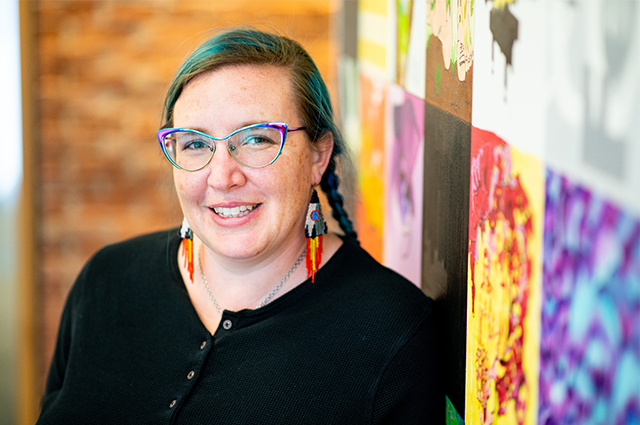Inventive by nature, engineers by calling: Kat Allen, EG26

Kat Allen, EG26
At Tufts, Kat Allen is pursuing a new chapter in an engineering career that started at MIT with a degree in aerospace engineering with information technology. Now a doctoral student in mechanical engineering and human-robot interaction, she is inspired by the human-centered research led by Elaine Short, Clare Boothe Luce Assistant Professor in the Assistive Agent Behavior and Learning Lab (AABL), as well as by related work from the Center for Engineering Education and Outreach (CEEO).
“One of my projects involves looking at makerspaces and how to invent a space for inventing. We’re interested in a hybrid space that is intended for people who have access challenges: People who identify as disabled, but also people who have ADHD or chronic pain. I talked, for instance, with a woman who has a limb difference. She has one hand with fingers and one hand without. She does all her typing with one hand, so you can imagine typing becomes painful. Her solution is one that a person with two-handed repetitive strain injury might also need.
“When inventing anything, the human connection is essential. You have to see the time that you spend with the customer as a precious resource. It requires a lot of perspective taking, a lot of soft skills. You can’t solve the problem if you don't start with what the person needs and wants; you can't do good engineering.
“What I’ve found is essential is that we can work with each other, we can inspire each other, we can create things and remix ideas that work together in new ways. And that's ultimately what we want to make in this makerspace. It should be a space where people can be inspirational. The people who founded the makerspace movement imagined that it's all about the people and about the spirit of innovation, much more than about the stuff you have there. It’s about bridging the gap between ‘I'm interested in making something’ and ‘I feel like I can walk into this space and just start using the tools.’
“Getting to that broader perspective of a successful human-robot interaction does not come easily. Asking yourself, ’How can I make this better for people who are not like me?’ is hard. And that's the place where I feel like engineering has more work to do. How do I make this better for people who don't look like me? How do I make this better for people who don't move like me or act like me? Every engineer I've ever met wants to make things better. We're going in the right direction. We just need to think bigger.”
Department:
Mechanical Engineering